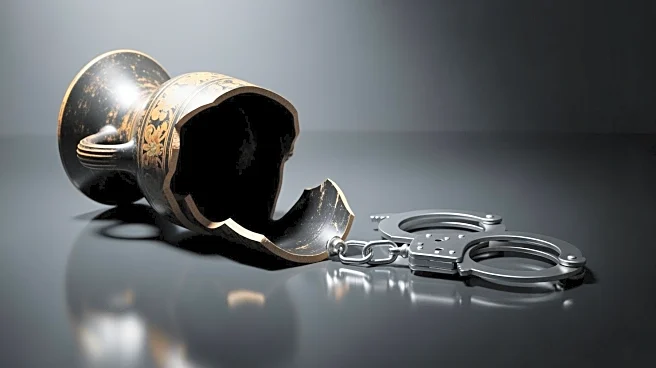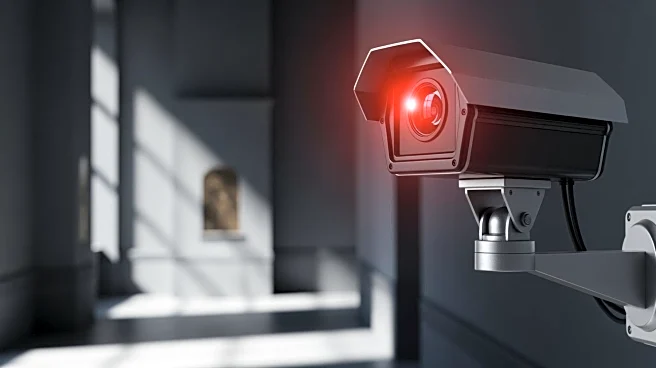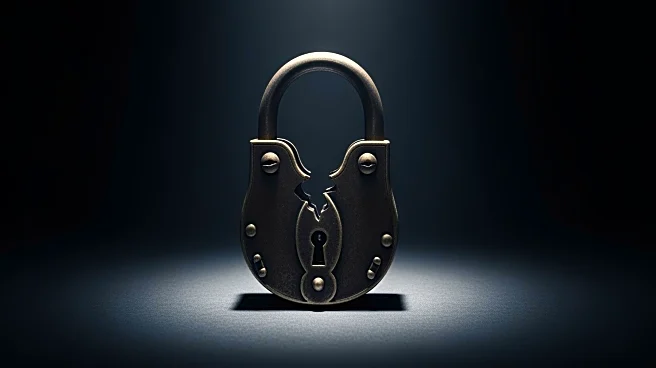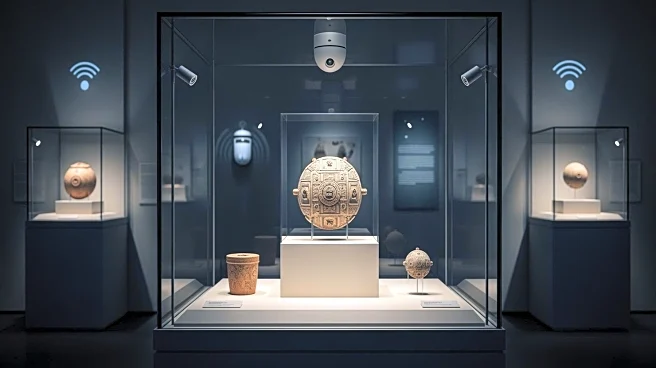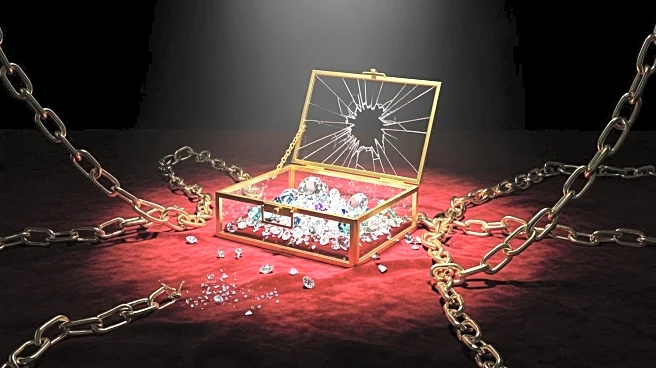What's Happening?
Paris prosecutors have announced the first arrests in connection with the theft of crown jewels from the Louvre, which occurred a week prior. The heist involved thieves posing as renovation workers, who
used a stolen truck equipped with a freight lift to access the museum. They entered through a window and used disc cutters to remove jewels from display cases. The theft triggered alarms, leading to an evacuation of visitors and a swift response from security personnel. Despite the quick actions, the thieves managed to escape with several valuable items. The investigation has involved over 100 investigators and forensic experts analyzing surveillance footage and evidence collected from the scene.
Why It's Important?
The theft of crown jewels from the Louvre represents a significant breach of security at one of the world's most visited museums, highlighting vulnerabilities in cultural institutions. The incident has drawn attention to the need for enhanced security measures to protect valuable artifacts. The arrests mark a critical step in the investigation, potentially leading to the recovery of stolen items and the prevention of future thefts. The case underscores the challenges faced by law enforcement in dealing with sophisticated criminal operations targeting high-profile cultural sites.
What's Next?
Investigators continue to work on the case, with efforts focused on recovering the stolen jewels and apprehending all individuals involved in the heist. The arrests may lead to further breakthroughs, as authorities analyze evidence and interrogate suspects. The museum is likely to review and strengthen its security protocols to prevent similar incidents. The cultural sector may also see increased collaboration with law enforcement to safeguard valuable collections.
Beyond the Headlines
The Louvre heist raises broader questions about the security of cultural heritage and the risks posed by organized crime targeting art and historical artifacts. It highlights the importance of international cooperation in art theft investigations, as stolen items often cross borders. The incident may prompt discussions on the ethical responsibilities of museums to protect their collections and the role of technology in enhancing security measures.


